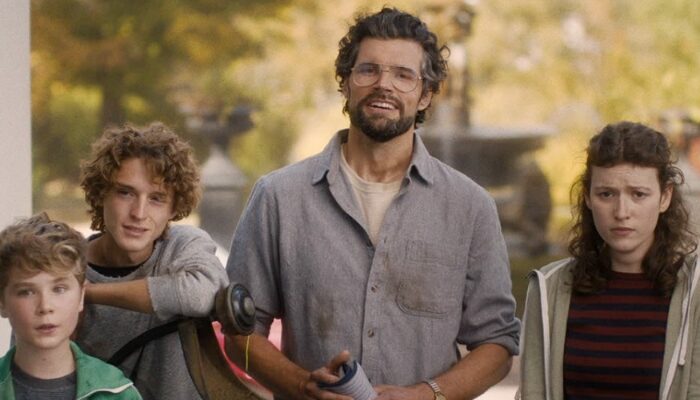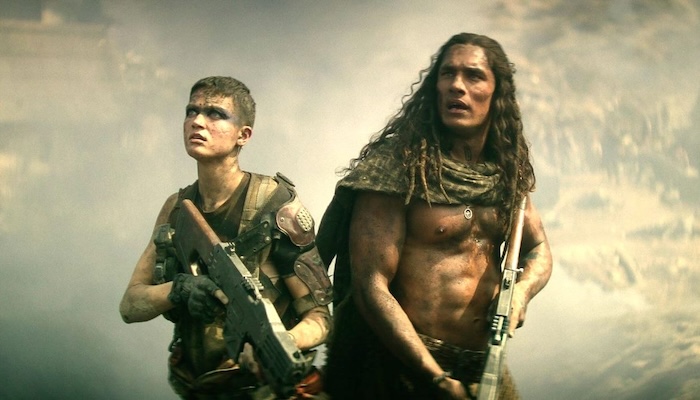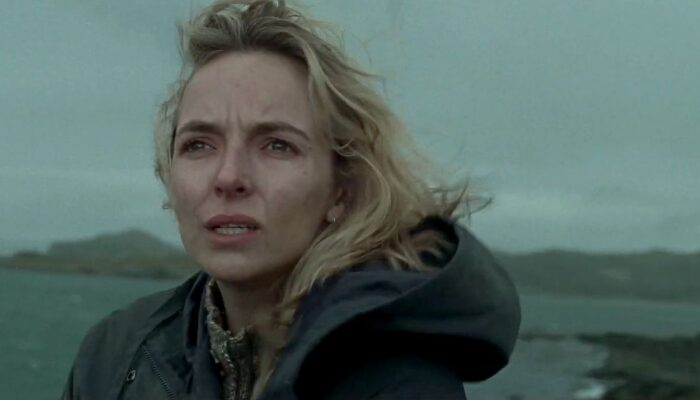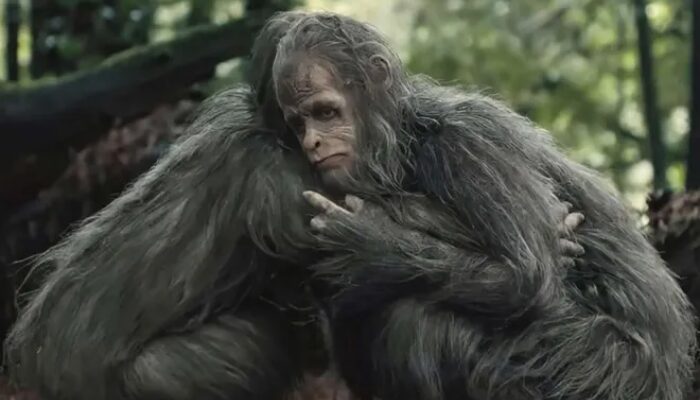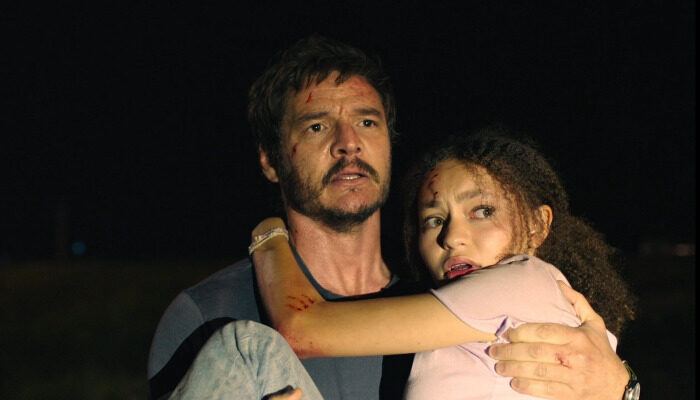TV Review: THE LAST OF US: Season 1, Episode 1: When You’re Lost in the Darkness [HBO]
Table of Contents
The Last of Us When You’re Lost in the Darkness Review
HBO‘s The Last of Us: Season 1, Episode 1: When You’re Lost in the Darkness TV Show Review. The Last of Us has been released into a graveyard of butchered, dead, and dying video game-to-TV and video game-to-film adaptations. Luckily for The Last of Us, it does not fall victim to the trappings of some of those ill-fated adaptations: writers that have not played the source material, radical changes introduced that alienate the per-existing audience, or what is presented on-screen being silly, making no sense, and a final product that rejects the viewer’s attention instead of attracting it, grabbing the viewer, and drawing the viewer into an unknown yet intriguing world, one full of unknown narrative possibilities. The Last of Us is that rare video game adaptation that attracts, grabs, and draws while staying true to its source material and the basic rules of good story-telling.
The 1968 Opener
The 1968 opening scene for When You’re Lost in the Darkness, and the series, is eloquent in numerous ways. It a.) creates an ominous mood right at the beginning of the episode, b.) sets the tone for the series, and c.) info dumps to the audience a lecture on fungi (while disguising it), telling the viewer what is the culprit of the later outbreak. It was a perfectly utilized scene. It is not heavy-handed like the Center for Disease Control scenes in the first season of The Walking Dead, though those scenes were very good (e.g. “You’re killing us!”), and is no less dread-fomenting.
Compared to a Recent Adaptation
Unlike the recent sophomoric Resident Evil TV adaptation, the adaptation of The Last of Us feels realistic from its outset. Where Netflix’s Resident Evil was a cartoon, breaking the laws of rationality left and right, The Last of Us always, at least for the most part, stays grounded in the recognizable, like the first three seasons of Daredevil. Because of this approach, when dystopic concepts are introduced as commonplace in When You’re Lost in the Darkness, like public executions à la The Handmaid’s Tale, they are easier for the viewer to accept.
Translating the Game to the Screen
Having played the video game The Last of Us TV series is based on, I can say that some key sequences, right down to the camera placement, is recreated in When You’re Lost in the Darkness, without it being distracting or out-of-place. It is fan-service but good fan-service, done with a light touch, showing how well the game was story-boarded and how wise The Last of Us creators Craig Mazin and Neil Druckmann were to use some of those sequences in their small-screen presentation.
Death and PTSD
Sarah Miller (Nico Parker) could have been a throwaway character in The Last of Us, an after-thought because of her short screen-time, but that is not how she is written or portrayed. She is written and portrayed as the moving force in her household like Dani Ramos in Terminator: Dark Fate, someone who exudes leadership-qualities, thoughtfulness, and competence.
When Sarah gets injured, the viewer thinks “oh no”. When she gets shot, the viewer is as surprised as those in her vicinity. She matters. Her presence to her father and her neighbors matter. Her death matters.
The effect of Sarah’s death on Joel Miller (Pedro Pascal), though emotionally immediate, has lingering repercussions for him. This is seen in two scenes in When You’re Lost in the Darkness.
The first is a sad scene with an infected boy and the disposal of his corpse. Joel can do what is necessary with the boy’s body because he has been desensitized to the death of children. He can wade into those waters without discomfort. The second scene is when Joel beats-to-death Soldier Lee (Max Montesi) after suffering a post-traumatic stress disorder (PTSD) flashback to Sarah’s death. Joel didn’t want to see another girl his daughter’s age die. He didn’t want to feel powerless again and his unspent rage from that terrible moment in his life is unleashed.
Joel’s PTSD may make him a liability outside the quarantine zone as Joel knew Lee, had a mutually beneficial relationship with him, and still beat him to death. Joel’s propensity for violence is probably why Robert feared him and may be one of the reasons why Theresa ‘Tess’ Servopoulos is with Joel.
Ellie’s Backstory and Current Status
Like any good mystery, the tidbits of Ellie Williams (Bella Ramsey)’s past and current status featured in When You’re Lost in the Darkness raised more questions than they answered. The fact that she was placed in a orphanage by the head of the Fireflies is interesting. The fact that Ellie has been infected with the killer fungi and seems to be immune is even more interesting. My guess is that the Fireflies are going to try to weaponize that immunity (i.e. duplicate it to cure and immunize others) to rest societal control from FEDRA and restore democracy. Or possibly use Ellie as a beacon, a banner for those sympathetic to the Fireflies and their cause to rally around à la Kee and the Fishes in Alfonso Cuarón‘s Children of Men. Hope is a powerful emotion engine, and if Ellie is immune, she may be that hope.
The Ending
The radio codes and Abe’s warning to Joel all set the stage for the ending to When You’re Lost in the Darkness, where Joel’s radio is in the center of the frame (textbook film school setup), switching itself on, playing the warning song, even-though there is no one left in Joel’s apartment to hear or heed it. The camera following Joel, Ellie, and Tess through the fencing of the FEDRA quarantine zone, the music swelling, and the moonlight showing the ruins of Boston’s commercial district, ruins and dangers into which the trio are willingly walking.
It is a welcome surprise seeing this level of care put into simple shots like this, raising the bar of what the viewer thought they would get from the episode.
Leave your thoughts on this The Last of Us When You’re Lost in the Darkness review and this episode of The Last of Us below in the comments section. Readers seeking to support this type of content can visit our Patreon Page and become one of FilmBook’s patrons. Readers seeking more The Last of Us can visit our The Last of Us Page and our The Last of Us Facebook Page. Readers seeking more HBO articles can visit our HBO Page, our HBO Twitter Page, and our HBO Facebook Page. Readers seeking more HBO Max articles can visit our HBO Max Page, our HBO Max Twitter Page, and our HBO Max Facebook Page. Readers seeking more TV show reviews can visit our TV Show Review Page, our TV Show Review Twitter Page, and our TV Show Review Facebook Page.
Want up-to-the-minute notification? FilmBook staff members publish articles by Email, Feedly, Twitter, Facebook, Instagram, Tumblr, Pinterest, Reddit, Telegram, Mastodon, and Flipboard.
Related Articles
FilmBook's Newsletter
Subscribe to FilmBook’s Daily Newsletter for the latest news!

